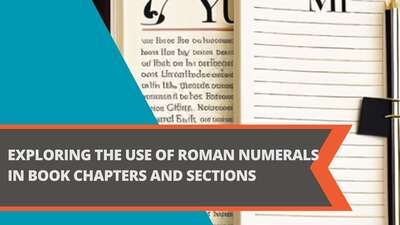A Beginner's Guide to Roman Numerals: How to Read and Write Them
Have you ever come across a date or a page number written in Roman numerals and felt confused? Don't worry, you're not alone. While Arabic numerals (1, 2, 3, etc.) are the most common numbering system used today, Roman numerals have been used for centuries and are still present in many contexts, such as book chapters, clock faces, and movie credits. In this beginner's guide, we'll walk you through the basics of how to read and write Roman numerals, and get you up to speed on this classic numbering system in no time.
What Are Roman Numerals?
Roman numerals are a system of numerical notation used in ancient Rome and throughout Europe until the late Middle Ages. They are based on a set of seven letters, each of which represents a different value:
- I = 1
- V = 5
- X = 10
- L = 50
- C = 100
- D = 500
- M = 1,000
By combining these letters in different ways, larger numbers can be represented. For example:
- II = 2 (I + I)
- III = 3 (I + I + I)
- IV = 4 (V - I)
- VI = 6 (V + I)
- IX = 9 (X - I)
- XII = 12 (X + I + I)
- LXXXVIII = 88 (L + X + X + X + V + I + I + I)
- CDXLIV = 444 (CD + XL + IV)
How to Read Roman Numerals
Reading Roman numerals involves understanding the values of each letter and the order in which they appear. Here are some basic rules:
- Letters are read from left to right, with the larger values to the left.
- If a letter of smaller value appears before a letter of larger value, subtract the smaller value from the larger value. For example, IV is 4 (5 - 1).
- If a letter of smaller value appears after a letter of larger value, add the smaller value to the larger value. For example, VI is 6 (5 + 1).
- Letters can be repeated up to three times in a row to represent larger values. For example, XXX is 30 (10 + 10 + 10), but XXXX is not a valid representation of 40.
- A bar placed above a letter multiplies its value by 1,000. This is rare, but you may come across it in some contexts.
Once you understand these rules, you'll be able to read Roman numerals with ease. Practice by reading the date of the year in Roman numer
To summarize, Roman numerals have a long and fascinating history and are still used in various contexts today. They are often used in numbering chapters and sections in books, and learning how to read and write them is a valuable skill for anyone interested in literature, history, or mathematics. Hopefully, this beginner's guide has given you a solid foundation to start exploring the world of Roman numerals. For more information and tools to help you work with Roman numerals, be sure to check out our website at https://numbersconverter.com/roman-numerals-converter-definition-formula-examples-and-explanation. Happy calculating!







